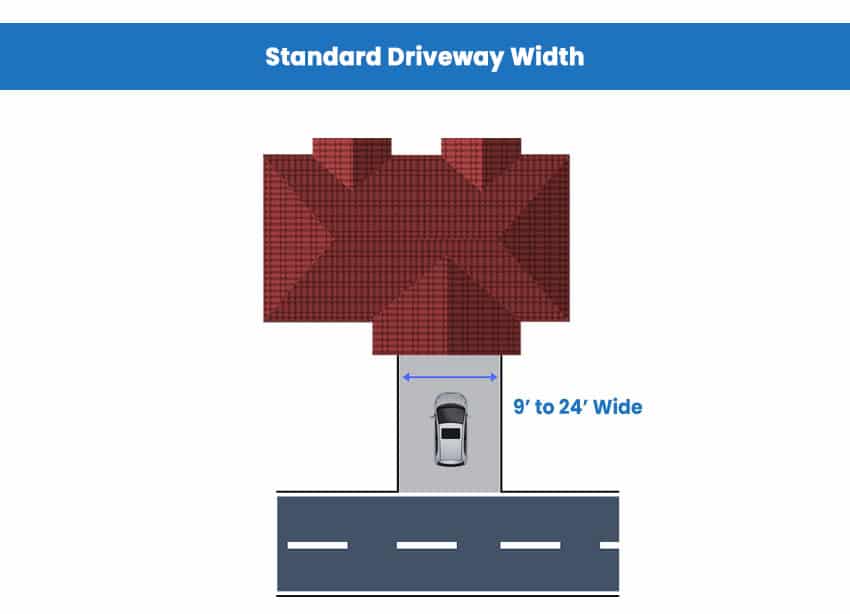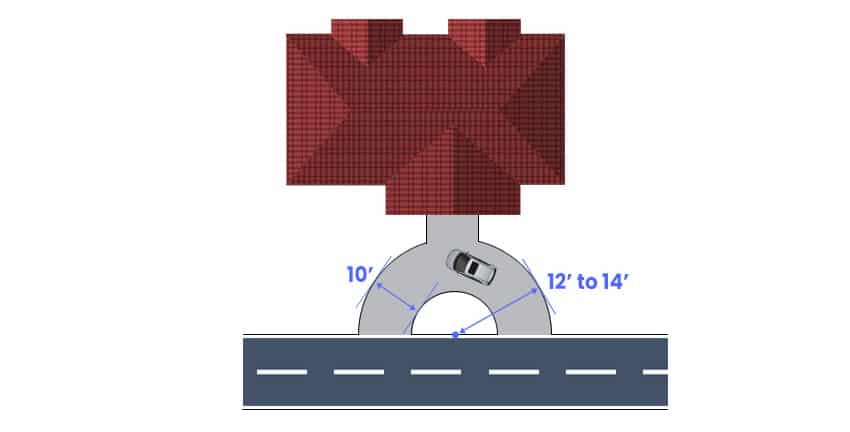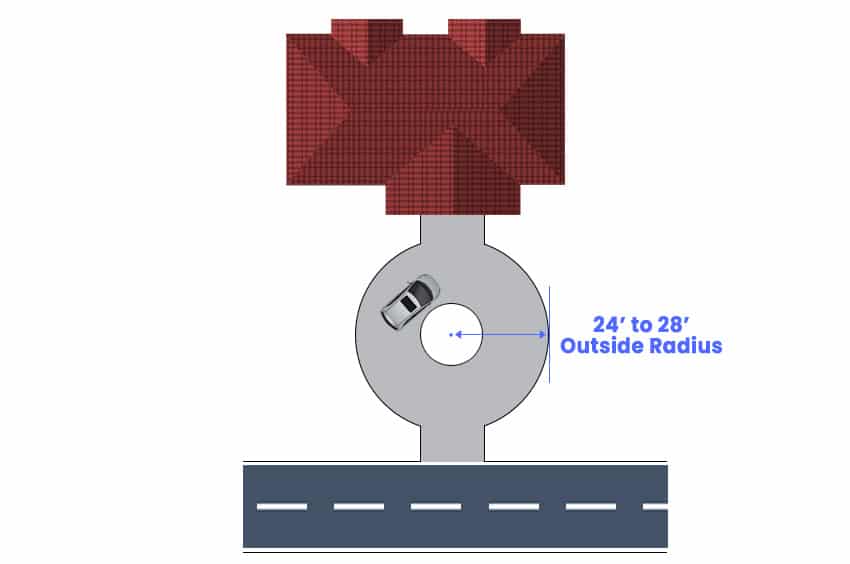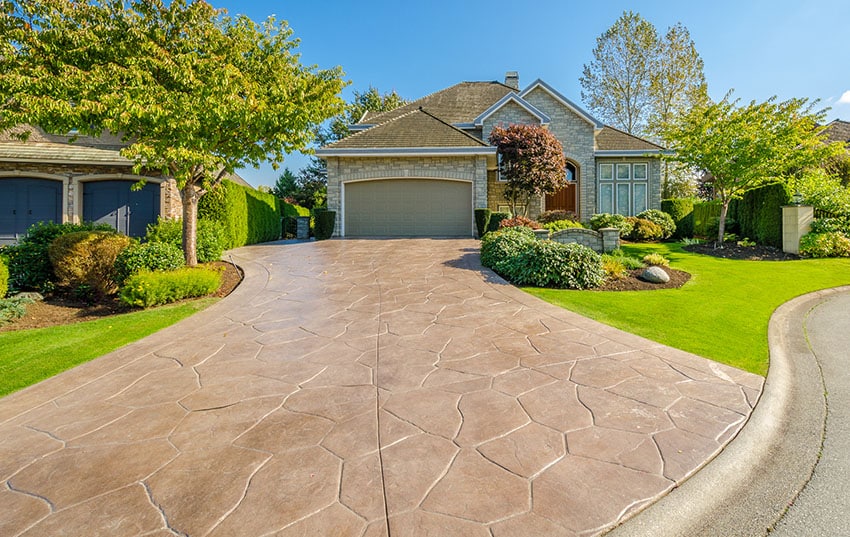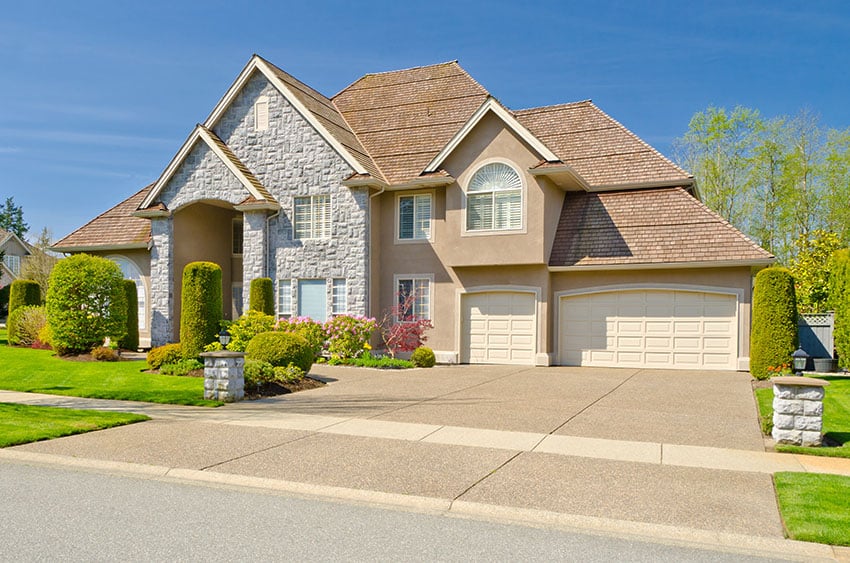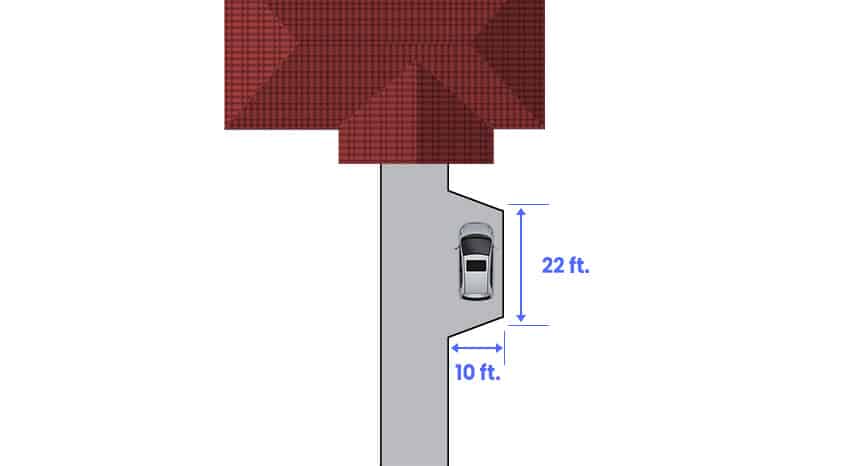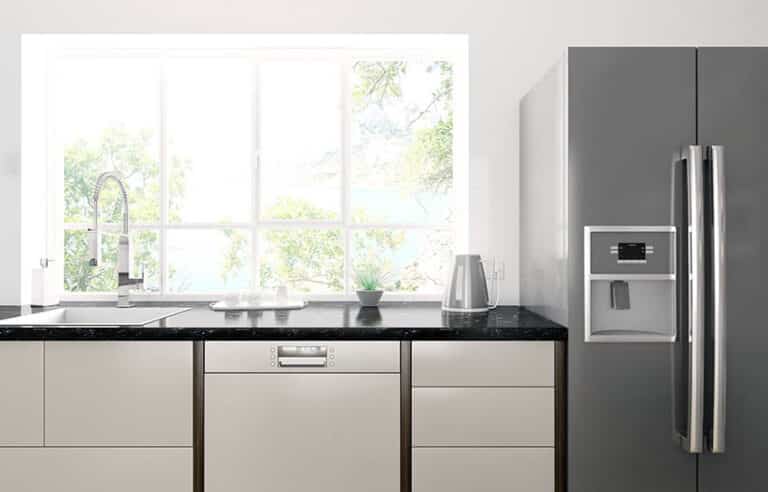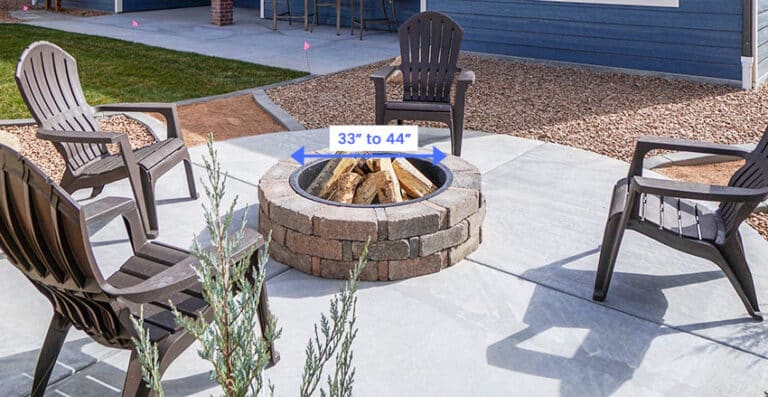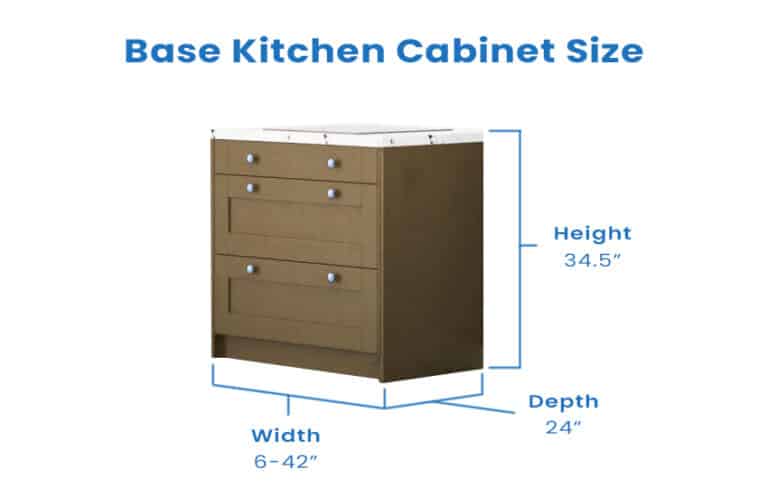Driveway Dimensions (Standard & Custom Parking Sizes)
Here’s our guide to driveway dimensions, including standard, minimum, turnaround, circular & semi-circular design sizes and parking space measurements.

Driveways are a must for households, especially if you have a car or two, but building the front drive of your dreams is dependent on different factors. Driveways were once simply a passageway for automobiles going to your residence, but now they speak to how lavish or practical a home is according to the owner’s lifestyle.
There are more oversized motor courts that are not just passageways for multiple cars but also feature landscaping on the sides that doubles as a garden. You might often find front drives like these in hotels or much bigger homes.
There are also modern and all-American tarmac or concrete driveways, which are inexpensive and practical for the average household with one or two cars.
Standard Driveway Width
The standard types of driveways you most often see are residential home drives that have a width from side to side that ranges anywhere from 9 to 24 feet or about 3 to 7 meters. However, this width will vary and depend on how many cars you have in your household.
Aside from the number of cars, the driveway’s width will depend on features like turnarounds, materials, and available parking space. As for the materials, you want your driveway to be constructed with paved, stamped, or pervious concrete, bricks, pavers, asphalt, or, as a budget choice, gravel pebbles.
It is essential to consult with experienced contractors to get a rough estimate of how much you will be spending and if your plan is feasible for the budget and space available.
How Wide Should A Driveway Be?
The pros recommend installing a driveway with a width of 10 feet by 12 feet. For a standard pickup or an SUV, the recommended width is 10 feet.
Minimum Driveway Dimensions
The minimum driveway dimensions will depend on how many cars you have in your household, whether you have one or three, and if you plan to have them parked outside or whether or not you have a garage.
For a single driveway, the minimum width will be 10 feet or about 3 meters, but to open and close your car with ease, an addition of 2 feet to your drive width will be better.
A two-car driveway should have a minimum of 20 feet or 6 meters, but going up to 24 feet or 7 meters is better. This allowance will allow two users to open and close their cars easily.
For households with three vehicles to their perusal, a 30-foot or 9-meter front drive will allow three cars to utilize the drive side to side when required. Giving an allowance of 2 feet for each of the three vehicles will also be helpful.
Semi Circular Size
Semi-circular driveways are recommended if you want increased safety and are afraid of backing into the street when you need to leave. However, circular drives are a feature for more oversized homes with a huge lot that can do these things and more, such as completely circle a fountain or other landscape features.
Like straight designs, semi-circular or half-circle drives will require a plan to ensure the layout is adequate for its purpose.
Semi-circular driveways should have a minimum width of about 10 feet or 3 meters and a depth of 12 to 14 feet or approximately 3 to 4 meters. This size should add up if one wants to park larger cars like vans or even RVs.
Circular Driveway Dimensions
The minimum dimension requirement for a circular driveway is a width of 24 to 28 feet or about 7 to 9 meters from one outside point to the other.
A whole circular driveway is probably what you’re thinking of for your dream front drive. This is primarily a fixture for sprawling mansions and chateaus we usually see on television or in movies.
A circular car path will offer people more places to park and will be easier to maneuver for more oversized vehicles. That benefit comes with the drawback that a circular design will require the most space out of all the motor court layouts. The disadvantage is the higher price and maintenance required for the bigger area.
Small Circular Dimensions for Driveway
If you want a circular driveway for your home but want the minimum dimensions allowable, you can still certainly have a circular car path.
A small circular drive follows the minimum width allowable for a circular design from the inside to the outside radius and will usually range from 22 feet or about 7 meters at least.
This 22 feet of the minimum outside radius will only accommodate smaller cars, from sports cars to sedans, so if you have a bigger vehicle, it will be better to opt for the standard circular width that could go up to 28 feet or 9 meters.
Driveway Turnaround Dimensions
If you plan to have a more sizable driveway for your home, it will more or less require a driving turnaround area that will make backing in and out as easy as pie. The turnaround should have adequate space for a single vehicle to clear out of the garage first before turning down and backing out.
This turnaround space is typically about 10 feet or 3 meters wide at the minimum, with a depth of 12 to 14 feet or approximately 3 to 4 meters. This size will go up if you have larger cabs or vehicles.
Driveway Dimensions for 1 Car
A single-car driveway is the narrowest you can get, even among all types of car path layouts. This design will be enough for one car to go in and out of the curb to the road with ease. It will have the minimum dimensions required for a car path, but this size can easily be adjusted with factors like vehicle type and size in mind.
A one-car front drive will have a minimum width of 9 feet or approximately 3 meters; however, it could go up to 12 feet or about 4 meters if you have a larger vehicle like SUVs.
1 Car Driveway Width
By following the minimum dimension of 9 feet, we can assume that the vehicle user will exit to a bed of grass, pavers, or even dirt, so actually going for the 12 feet or 4 meters of paved width is more advisable even if you do not have a larger vehicle.
This size will allow easy access even for delivery persons or trash trucks, but ensure that you are not going beyond 12 feet or 4 meters because anything less than 20 feet will be a waste of space. It would be big for just one vehicle but also not large enough that two cars can be accommodated.
Driveway Sizes for 2 Cars
If you have two vehicles, going for a double driveway is the right move for your home. For this, the range is between 20 feet to 24 feet or about 6 to 7 meters.
If you have a single car but are planning to get another, your best bet is to go for a double drive. You will have the space and the option for visitors to park while you entertain them.
2 Car Driveway Width
A double driveway will require a width of about 20 to 24 feet; however, going for the minimum width of 20 feet will not give the freedom for both of the cars to pass each other, which means that in the end, the 20 feet space will not be enough for two vehicles to simultaneously open doors if both cars are parked side by side.
If you have two vehicles to park side by side in your front drive, the better choice is to opt for the maximum width for a double at 24 feet or about 7 meters.
3 Car Garage Driveway Measurements
If you have three cars, it will only be appropriate to go for a three-car garage and a three-car drive. Read more about garage dimensions on this page.
If a minimum of 12 feet or about 4 feet is required for a single vehicle, triple that size, and we arrive at a triple car driveway of about 30 to 36 feet or approximately 9 or 11 meters from one side to the other.
3 Car Driveway Width
If a triple car driveway should have a size of 30 to 36 feet or approximately 9 or 11 meters, the maximum of 36 feet or 11 meters will be better in the long run.
The minimum size of about 30 feet or 9 meters will not allow three vehicles to park side by side with each other, and opening doors simultaneously will be impossible with this space allowance.
The maximum size of 36 feet will be your best bet; however, if you have a larger vehicle, it is only better to adjust the surface area for each car to go in and out of the parking area easily.
The driveway serves as the main access to your home. It should accommodate not only the family’s everyday vehicle use—including work if you run a home business—but also special purposes such as deliveries and entertaining – Ultimate Guide to Home Repair and Improvement, Editors of Creative Homeowner
Driveway Parking Space Size
Aside from the turnaround space, another utility use of your front drive allows for parking space even if you do not have a garage. The critical factor is deciding how many vehicles you are considering parking at a time.
When deciding the parking space, the rule of thumb allows each vehicle to have an area of 10 feet or 3 meters in width plus 22 feet or about 7 meters in length.
Therefore, if you want to park two cars simultaneously, a paved space of 20 feet to the more convenient 24 feet should be allowed for your home’s parking space.
If you have experience with access road construction, want to ask any questions, or share information about your experience with driveway design, please leave a comment below. For more pictures, visit our driveway gate ideas on this page.

